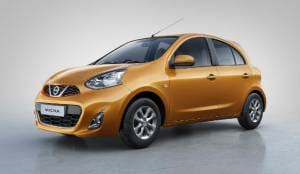2017 Nissan GT-R road test review
For many years, Pedder Road in Mumbai was home to one of the only places in India that sold Porsche dreams to people like me. As far as I remember, it was one of the few car showrooms back in the day that would leave its lights running all through the night. Every time I would visit the city, I would spend hours standing outside that showroom at night, mesmerised by the sight of cars that embodied the most holy digits in automotive history - 911. A love story was developing.

In 2008 though, Nissan took a jab at Porsche as its new sportscar set a blisteringly fast lap of 7:29.03 at the Nurburgring, pipping the Porsche 997 Turbo by 11 seconds. Being a sport, Porsche responded and disputed the claim. But Nissan remained the faster car. That tiff sparked a revolution that not only shook the 911's foundations but also gave sleepless nights to most supercars. It also managed to make many Porsche fans switch sides. I was one of them. And that Nissan was the GT-R.
Even today its souped-up version, the GT-R Nismo, remains the third fastest street-legal car around the 'ring (7:08.68), only to be bettered by uber exclusive cars like the Aventador SV (6:59.73) and the Porsche 918 Spyder (6:57). The less extreme and far more affordable Nissan GT-R brags of a 7:18.2 lap which was set in 2012. Nurburgring lap times then are indeed a big deal for the GT-R. But despite being the most significant refresh to the GT-R since launch, the 2017 model that you see here somehow makes no mention of the 'ring. It begs the question - is the GT-R still the king of the 'ring or has the ability to churn out those numbers mellowed with its age?
Design
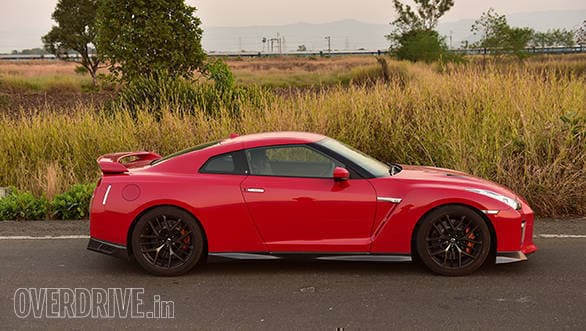
The Nissan GT-R has been around for a decade now - that is almost thrice the average lifetime of the Skyline GT-Rs that preceded it. But despite that age, there is still something very attractive about the GT-R's design. It was inspired by the Japanese anime and probably that explains why this is a timeless design. This inspiration also gives it quite expressive eyes, though the detailing is now more complex with its distinctive lightning-bolt shaped running lamps. The car has lost a bit of its elegance with all the redesigned aero bits like the front and rear splitter, new air dams in the front bumper and the bling of the chrome grille.
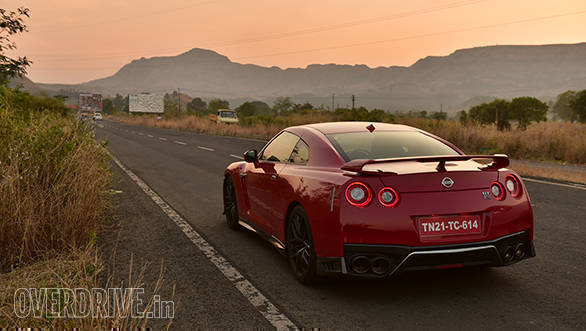
The tail still remains the most beautiful angle on the Nissan GT-R, neatly integrating a fixed spoiler and the trademark quadruple tail lights. Ironically, the rear three quarters of this car were designed by Nissan's American outfit. Though there is now a hint of aggression on the face, the GT-R still appears like a restrained beast. If you are into cars with outrageous wings, fins and intakes, the GT-R may not look as appealing to you. But its understated design has its old-school charm. It belongs equally well on the road as it does on the track. What appeals most to me is that it has an unmistakable sportscar form but doesn't look completely outlandish.
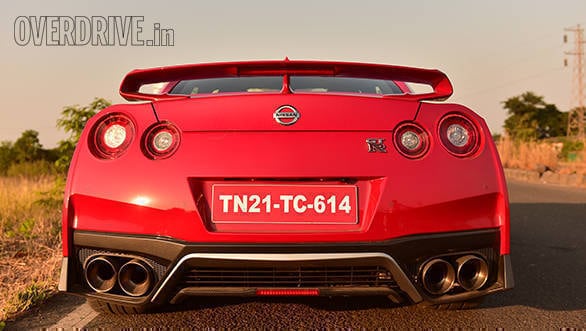
Cabin and practicality
It has normal doors too, and getting in and out of the Nissan GT-R is surprisingly easy for a sportscar. Taller drivers do need to mind their head with the sloping roofline. The seats are electrically adjustable, but ironically their movement is slow. So if you are the type who needs to retract the seat for ingress or egress, this can get frustrating. The seats aren't as comfortable as they look. Though they are quite accommodating, the backrest bulges out quite bit and can be cumbersome for certain people. The GT-R has seat pads in the back for kids, and while none of the kids I took for a spin could see outside - thanks to the high window line - they knew the car was going very fast. That works for me.
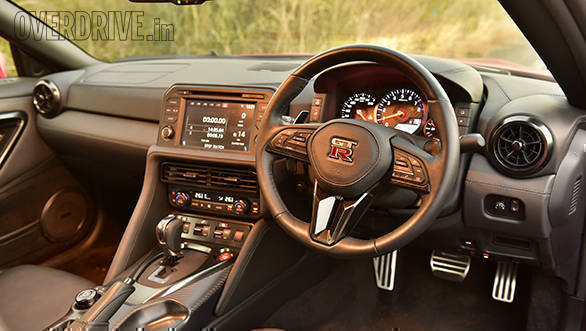
I like the fact that the entire instrument console moves along with the steering wheel when adjusting the rake angle, ensuring an unobstructed view of the clocks. The steering has a chunkier design and the instrumentation is now easier to read. I love its typical Japanese tuner-car inspired design - analogue clocks, a fancy carbon-fibre faceplate and a tiny multi-info display. The rev-counter takes centre stage and has a neat OLED shift-light between the 6,500rpm mark and the 7,000rpm red line to guide you with the optimum shift points.
The entire centre console on the Nissan GT-R is now redesigned. Though it is still a multi-layered design, the layout is cleaner. The AC vents, which used to resemble the Micra's units, have now made way for neater and more upmarket designs. The temperature control on our test car was quite inconsistent though and would sometimes freeze the cabin even with temperatures set to 29°C. Then there's the floorboard that heats up quite a bit every time the car is driven hard. Previous GT-R users, however, will notice that the cooling efficiency of the drivetrain is now better.
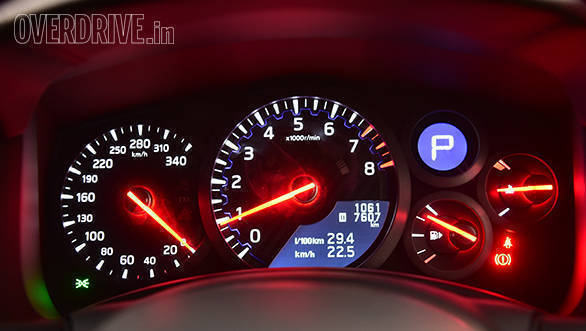
You will often find tons of gauges in the cabins of tuner-cars and that has inspired the infotainment system of the Nissan GT-R as well. It measures pressure and temperature of various engine fluids and the boost gauge for the turbocharger and stacks it all into a digital format on the infotainment screen. It throws in additional gauges for lateral G-forces and torque split between the front and rear wheels.
The infotainment system is designed by Polyphony Digital - the blokes behind the PlayStation exclusive Gran Turismo racing simulator. That also explains why the functionality is accurate, but the user interface and graphics are out of sync with today's age - literally the only letdown in the GT-R's cabin. Getting an updated infotainment out of Polyphony Digital would probably take a decade. GT Academy gamers know what I'm talking about!
Drivetrain
Between the time I first read about the Nissan GT-R in 2007 and now when I have driven its latest avatar, it has gone up from 485PS to around 570PS. Give or take few ponies on the latter - partly because of the unavailability of 97 octane fuel in most parts of India and partly because no two GT-R engines produce the same amount of power since the VR38DETT V6 engines are hand built. The specially skilled technicians building these engines are called the Takumi, and our test car's motor is assembled by Tsunemi San. The tuning on India-spec model hasn't been tinkered around with at all.
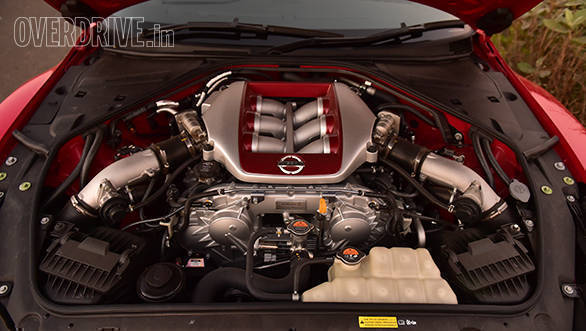
Interestingly, Nissan hasn't made any claims to the 0-100 figures either for the 2017 refresh. Which again raises the question - has it slowed down? On our test car with regular 93 octane fuel, the quickest 0-100kmph sprint that we could manage was 3.2s, which is about half a second slower than the claimed time of the 2012 model. This, of course, was with launch control (R Start in Nissan speak).
Like the Porsches, it is quite simple to activate - put the transmission and stability systems in R mode, step firmly on the brakes, shift to drive mode and step on the throttle. If you have done it right, the revs will lock at 4,000rpm (instead of 3,500rpm) and give you 3 seconds to let go off the brakes and launch the GT-R into the horizon. Find enough road and power will keep coming even beyond 300kmph! Unlike most new Porsches though, you can't keep using the launch control back to back. After four consecutive runs, our test car flashed a drivetrain warning and limited the drivetrain to lower engine speeds until things cooled off a bit.
So the good news is the numbers are not only very much still supercar territory, but this is now the fastest accelerating car we have ever tested! However, the engine has started to show its age. It doesn't feel as quick revving, and the gearbox, despite being a twin-clutch unit, is noticeably slow for everyday use. Shift to manual mode though and it responds quickly and smoothly to paddle inputs. When you step on the gas, there is a hint of turbo-lag, beyond which the engine builds up speed rapidly. The V6 is very smooth and even with the new titanium exhausts, it is quite silent.
This lack of aural drama, in turn, takes away the sense of speed. In fact, the noise is a bit of a letdown if you like snarls and roars. But if you love turbo-whistles and a shrieking top-end, the GT-R will plaster a wide smile across your face!
Ride and handling
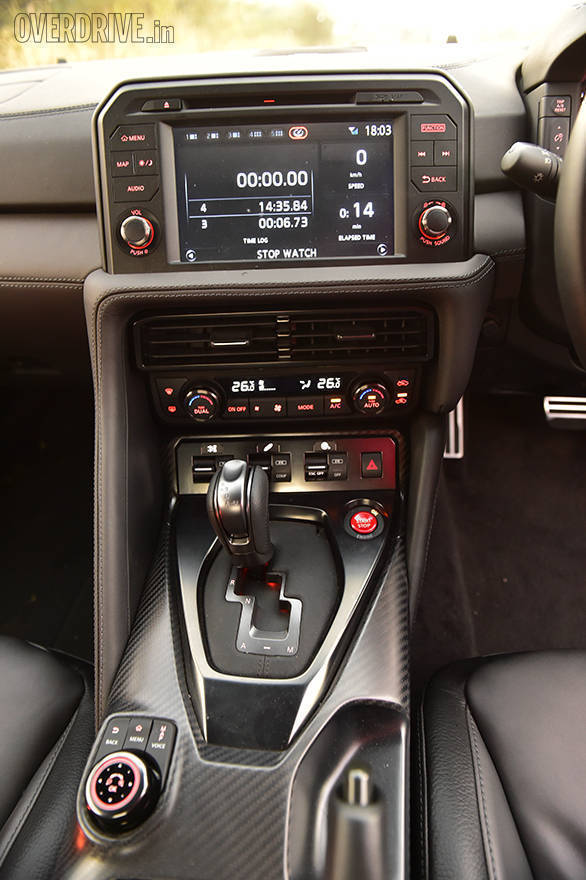
The secret potion for the Nissan GT-R is the chassis balance and its all-wheel-drive system. The latter uses a unique rear-mounted transaxle that not only reduces load on the driveshaft but also allows up to 50 per cent torque to be sent to the front wheels to aid performance or stability or both. The speed and accuracy of the AWD system is unreal, and it feels as if the GT-R knows beforehand how much traction and torque distribution is required for an upcoming curve. The dynamics, therefore, don't get upset easily and that also means that the electronics don't need to intrude often. The GT-R doesn't have the magical precision of a 911, but the handling is predictive, hard to falter and a lot of fun.
By placing the transmission and AWD transfer case at the rear, the GT-R achieves excellent weight distribution too. Left to right transitions are quick and flat. Throw her around a racetrack and you will be surprised at how light and agile the GT-R feels as compared to its bigger-engined rivals. You will also spend hours trying to figure out what the GT-R's limits are even on its road-biased tyres. And we aren't even talking the Nismo yet. It is only around really tight switchbacks that the GT-R shows a slight tendency to push the front into understeer.

The fully adjustable Bilstein DampTronic suspension has been made more road friendly now - offering almost the BMW 5 Series levels of ride on our roads. The suspension is also less noisy from what I remember of the previous model on the European B-roads.
Three toggle switches on the tunnel console let you set up to three levels of performance for the transmission, suspension and the stability systems, respectively. The transmission switch lets you toggle between a Save mode to aid fuel economy or an R mode to sharpen the gearbox response and let the engine rev to the red line when in manual. Likewise, the suspension toggle lets you choose between a squishy Comfort mode and a stiff R mode. The third toggle switch lets you turn off the stability controls completely or switch to the R mode for a more performance-oriented torque vectoring. A Normal mode is common to all the three switches.
In fact, I put the GT-R through all the routes and chores as my daily driver, and apart from the car scraping its underbelly on speed humps, the GT-R left no room for complaint. Thanks to the improved ride quality, the usability quotient has significantly shot up.
Verdict
Today if I were to stand outside a showroom and be mesmerised by the Nissan GT-R, I wouldn't be standing outside a swanky outfit full of sportscars. Instead, it would be the same hustling and bustling outlet that also sells Redi-Gos and Terranos. This again is a leaf out of the tuner culture - a powerful car can come from anywhere.
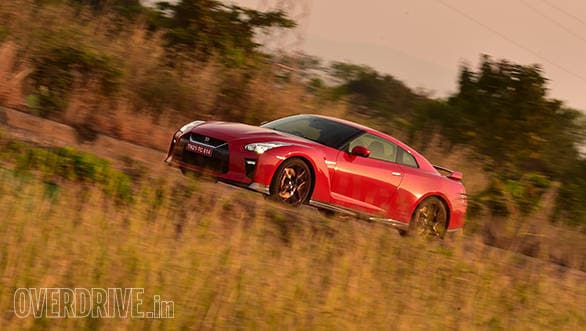
The thing I love the most about Japan is its ability to maintain the perfect balance between culture and technology. The GT-R too does just that and therefore it is no surprise that it continues to excite even today. Of course, at the same price point, you have other tempting options too - the Audi R8 V10, which is probably the last naturally aspirated V10 we will ever have, or the BMW i8, which is an insight into the future of the sportscar. But neither of these brings the kind of legacy that the GT-R brings to the table. The only other car that can match the GT-R on all aspects is the Porsche 911 Turbo. The battle between these two is an endless one, and I'm glad that it has now extended to the Indian subcontinent.
Images by Suresh Narayanan
Update: As it turns out, the GT-R will not be sold through standard Nissan dealerships. Click here for more
Starts Rs 2.12 Crore
3799cc
Automatic
570
637
-NA-
Starts Rs 2.55 Crore
5204cc
Automatic
610
530
7.63 Kmpl
Starts Rs 62.9 Lakhs
2993cc
Automatic
255
620
14.6 Kmpl
Starts Rs 2.62 Crore
1499cc
Automatic
361
250
-NA-
Starts Rs 4.78 Crore
6498cc
Automatic
700
690
-NA-
Starts Rs 1.38 Crore
2998cc
Automatic
350
530
-NA-
